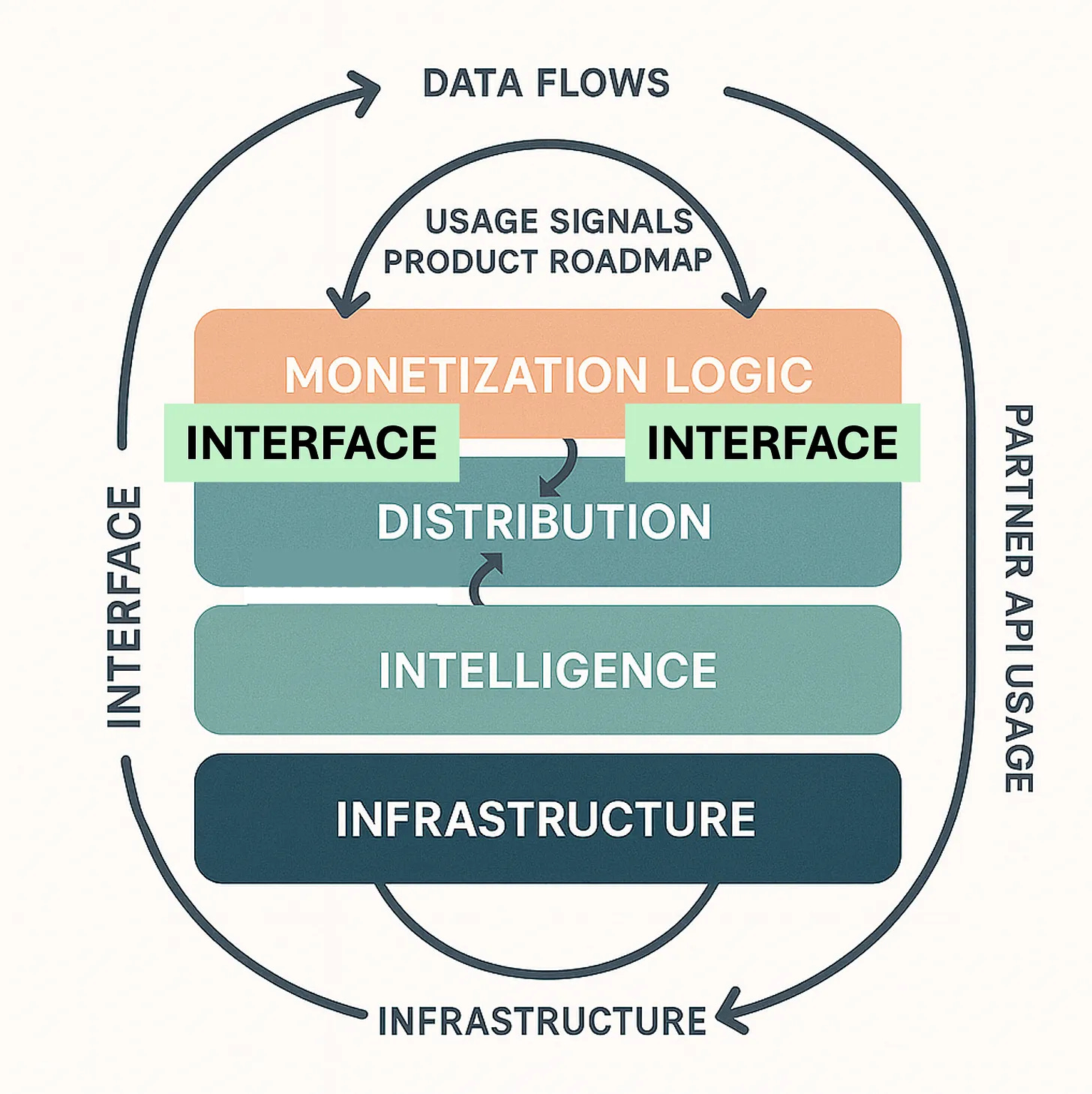Where Does Strategy Live in a Digital Firm’s Stack?
#92: 1.3 Disentangling dependencies, leverage points, and compounding effects across the five layers
In Chapter 1.1, we introduced the 5-layer stack as a way of rethinking business models:
Infrastructure → the digital and physical foundation
Intelligence → data, AI, learning loops
Distribution → how value flows to customers (and back)
Interface → where users and partners actually touch the product
Monetization Logic → the economic engine
We argued then that these layers aren’t linear but recursive, feeding one another in loops.
Stripe’s distribution is its API, allowing partners to build and extend its reach.
Notion’s interface is the product, making it malleable across use cases.
Shopify monetizes across layers (transactions, SaaS, lending, AI).
Anthropic builds strategy around intelligence as a layer, embedded into ecosystems.
Each firm shows how business models operate less like a static plan and more like a live, recursive system.
Read Chapter 1.1 again here:
This chapter now asks the harder question:
👉 Where does strategy really live inside this stack?
TL;DR: Finding Strategy’s True Power Layer
Modern firms operate across five layers: Infrastructure, Intelligence, Distribution, Interface, and Monetization.
Strategy isn’t evenly spread — power concentrates in certain layers while others become dependencies.
Four critical lenses for identifying where strategy “lives”:
Dependencies: Which external layers you rely on (e.g., AWS, Apple App Store).
Leverage Points: Scarce layers where you can exert control and set the rules.
Compounding Flywheels: Where loops of growth accelerate value (e.g., Amazon marketplace, TikTok recommendations).
Orchestration Costs: The complexity tax of managing interconnected layers.
Example contrasts:
Apple plays strategy in Distribution → App Store toll gate.
Netflix plays strategy in Intelligence → data-driven recommendations + content.
AWS plays strategy in Infrastructure → pricing leverage + market dominance.
Key takeaway: Your stack is a power map — strategy thrives where you control the scarce layer and design compounding flywheels while minimizing dependency risk and orchestration costs.
Table of Contents
Introduction: The Five-Layer Stack Recap
The Anatomy of Control
Dependencies: Who Controls Whom?
Leverage Points: Where Strategy Has Impact
Compounding Flywheels: Loops That Accelerate Growth
Orchestration Costs: Managing Complexity
Why This Distinction Matters
Case Example: Shopify’s Strategic Stack
Key Takeaway: Strategy as a Power Map
References
Keep reading with a 7-day free trial
Subscribe to The Strategy Stack to keep reading this post and get 7 days of free access to the full post archives.





